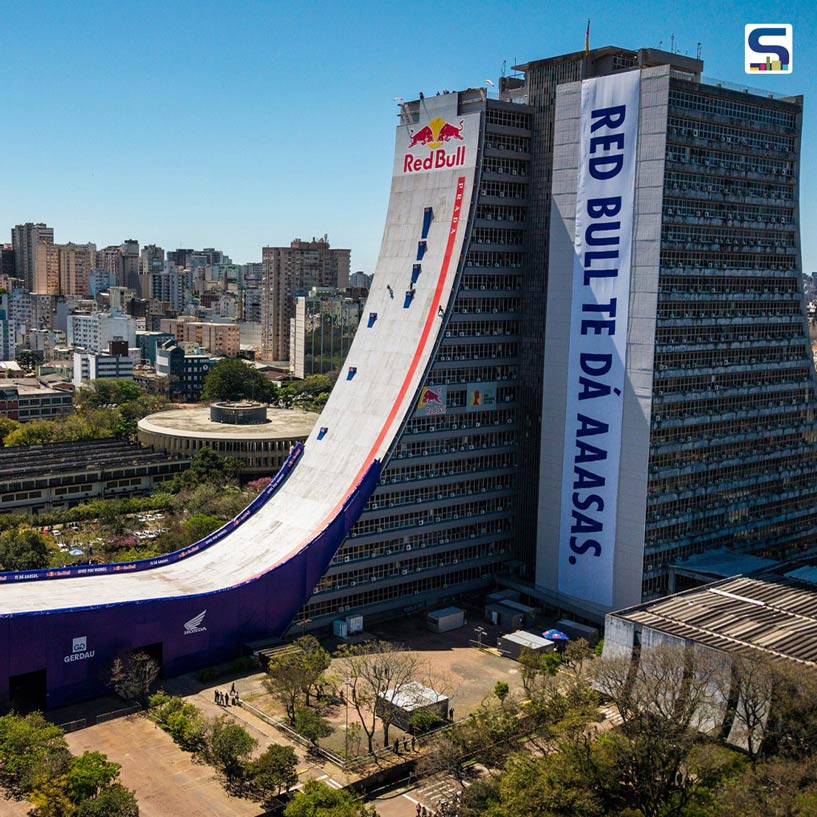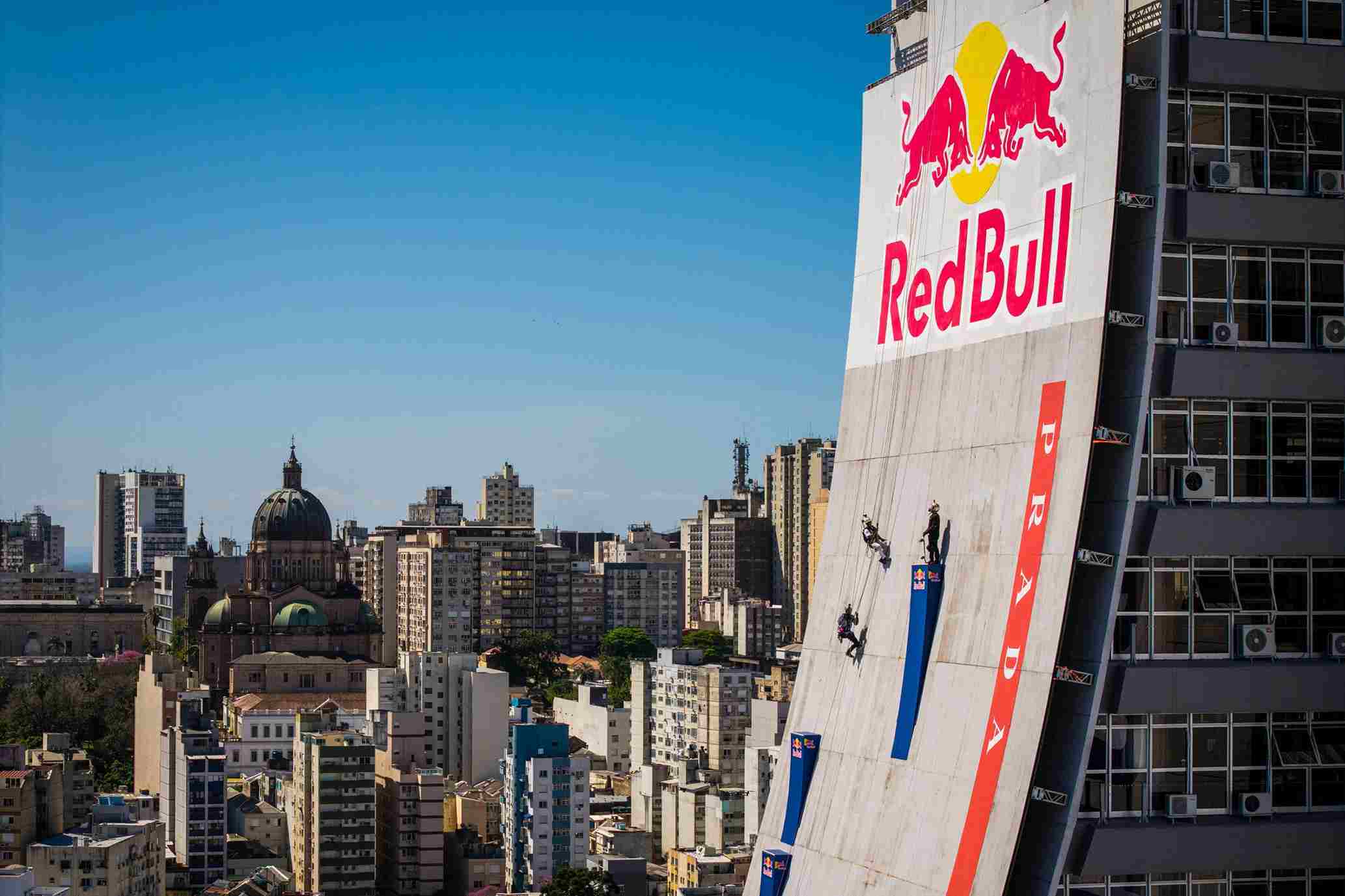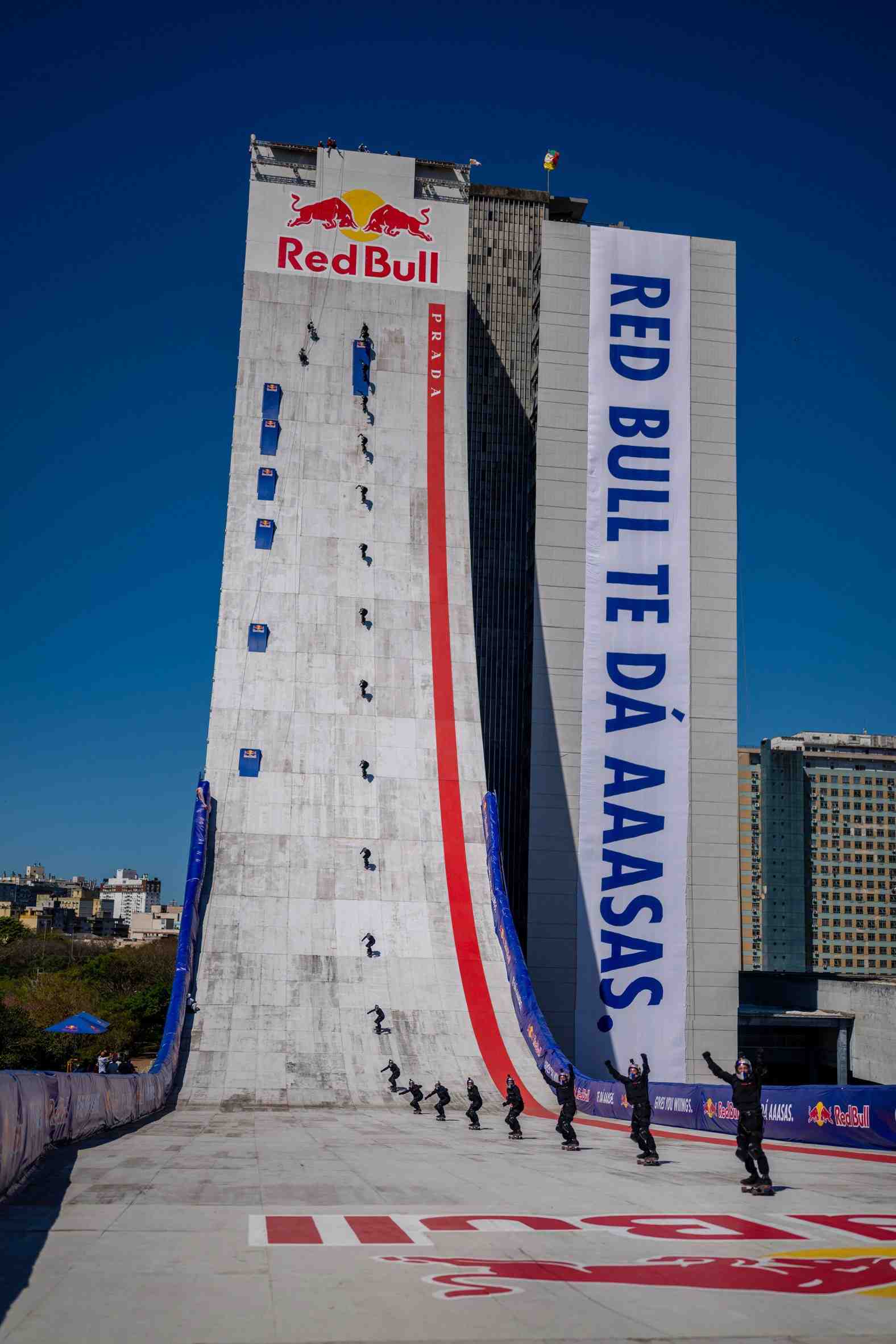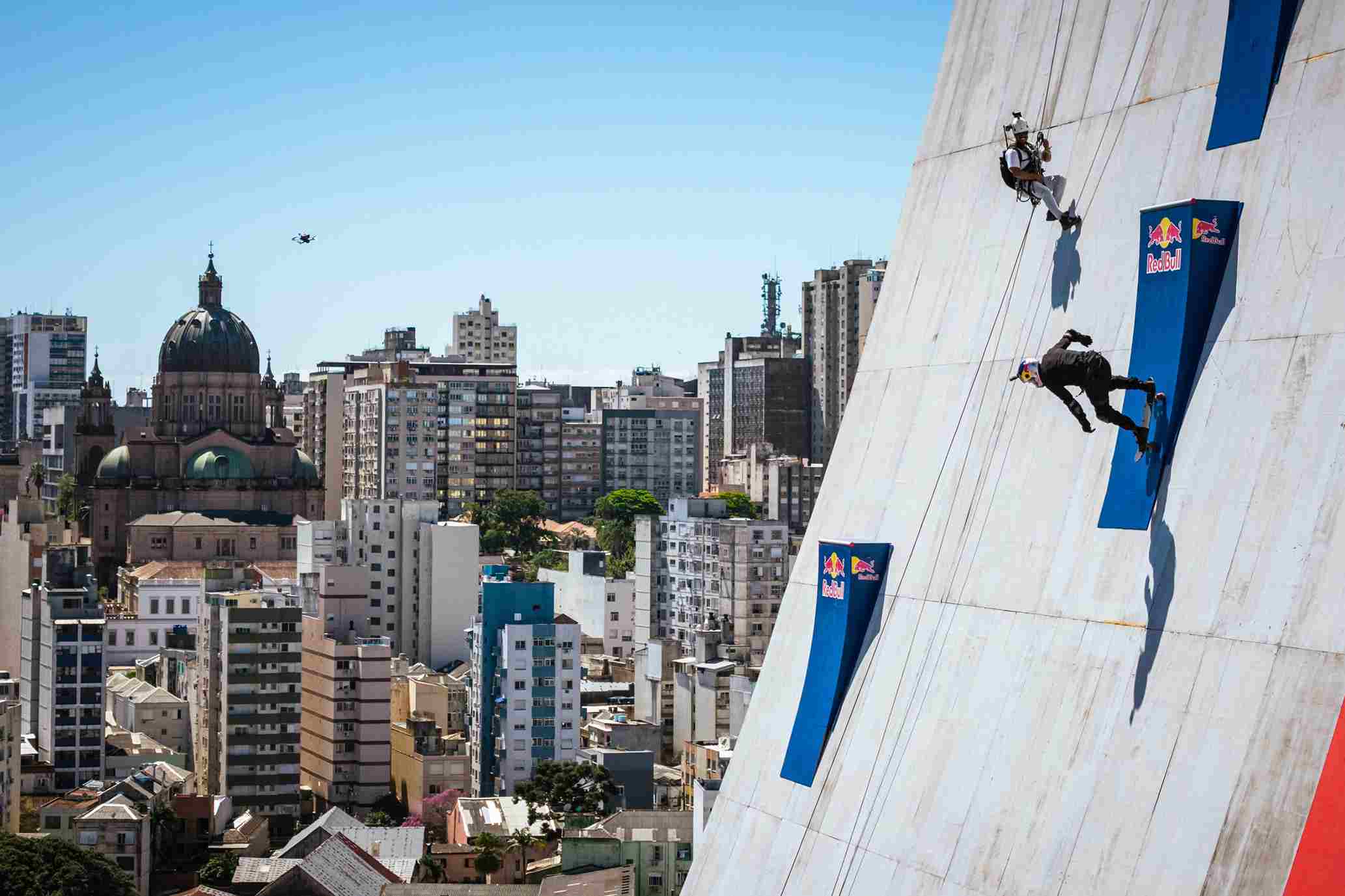
In a unique fusion of sport, architecture and fashion, leading beverage giant Red Bull and Italian luxury brand Prada recently transformed the curved facade of Porto Alegre’s Centro Administrativo Fernando Ferrari (CAFF) building into a colossal skate ramp for professional skateboarder Sandro Dias. For decades, the CAFF building had been a subject of fascination among Porto Alegre’s skateboarding circles, with many skaters dreaming of riding down its sloped facade. The event finally turned that urban legend into reality by transforming speculation into a world-record-breaking event that captured global attention. The event, titled the Red Bull Building Drop, took place on September 25 and witnessed Dias make history with a record-breaking descent down what is now considered the world’s largest quarter pipe. Learn on SURFACES REPORTER (SR) how creativity and collaboration can reimagine urban spaces by intersecting art, engineering and sustainability.

The quarter pipe ramp, constructed entirely out of plywood panels supported by a steel framework, spanned the full height of the building.
Creating wonders with plywood
Located in the centre of Porto Alegre, Brazil, the CAFF building stands 88.91m tall and houses government offices and the city’s symphony orchestra. For this one-of-a-kind collaboration, the building’s unique, curved form became the perfect canvas for a daring architectural intervention. The quarter pipe ramp, constructed entirely out of plywood panels supported by a steel framework, spanned the full height of the building. Extending beyond the edge, it created an elevated runway that accentuated the building’s dramatic slope. According to Red Bull, the construction took an entire month to complete, with the materials chosen specifically for both performance and safety.

The building’s gently sloping outer walls became the defining feature that inspired the ramp’s placement.
Plywood is a standard material used in professional skateboarding ramps for its flexibility and strength, but in this case, it also served a dual purpose of covering the building’s weathered concrete surface, which had become too cracked and uneven for safe skating. The CAFF building, completed in 1987, was part of a larger government development initiative and was designed by a team of five architects from the State Department of Public Works. Its distinctive form comprises two mirror-image volumes, each shaped like a right triangle and joined at the centre. The building’s gently sloping outer walls became the defining feature that inspired the ramp’s placement. Rather than altering or obscuring this iconic architectural silhouette, the temporary ramp complemented and celebrated it, turning the structure into both a monumental skate park and an urban sculpture.
Turning architecture into art
Along the length of the ramp, blue wedge-shaped platforms were strategically installed at heights of 55m, 60m and 65m, serving as progressive drop-in points for Dias to test his descent. After several runs, he eventually attempted the full drop from 70m (229ft), a feat that required him to be lowered multiple times from the rooftop using rappelling equipment. The final descent saw Dias reach an astonishing top speed of 64 miles per hour (103.8 kilometres per hour), earning him the Guinness World Record for the fastest speed skateboarding on a temporary quarter pipe. Additionally, his performance was recognized for the tallest drop into a temporary quarter pipe, further cementing the achievement in skateboarding history.

Along the length of the ramp, blue wedge-shaped platforms were strategically installed at heights of 55m, 60m and 65m, serving as progressive drop-in points for Dias to test his descent.
The scale of the project is almost four times larger than a conventional mega ramp, which typically ranges between 60m to 108m in length with drop-ins of about 12m or more. In comparison, this installation was not only a technical challenge but also a symbol of creative collaboration, bridging architecture, extreme sports and high fashion. Prada’s Linea Rossa sport collection was integrated into the event, with Dias wearing a custom performance outfit from the line during his descent, thus showcasing the luxury brand’s connection with innovation and dynamic movement.
Beyond the spectacle, the project was also guided by principles of sustainability and community benefit. Red Bull announced that over 115 tonnes of scrap material from the installation would be repurposed following the event. This included 800 wooden boards, which were either donated to local NGOs or converted into biomass, ensuring the project left a minimal environmental footprint while also giving back to the local community.
Image credit: Red Bull Content Pool